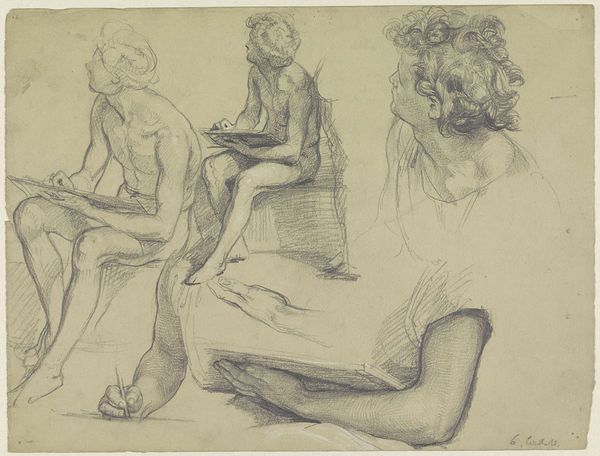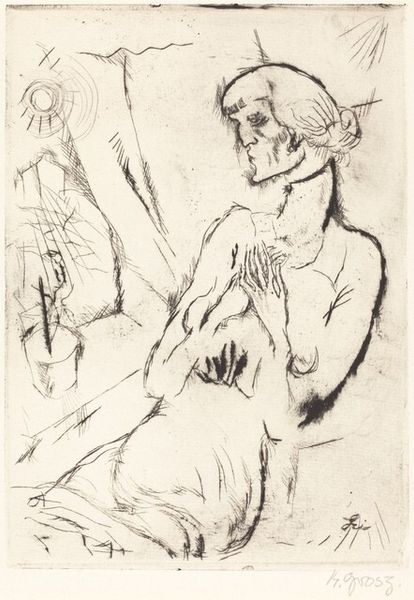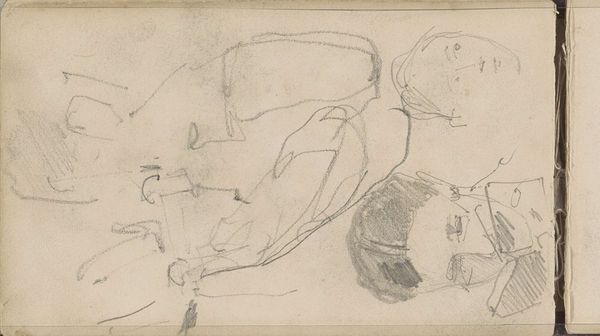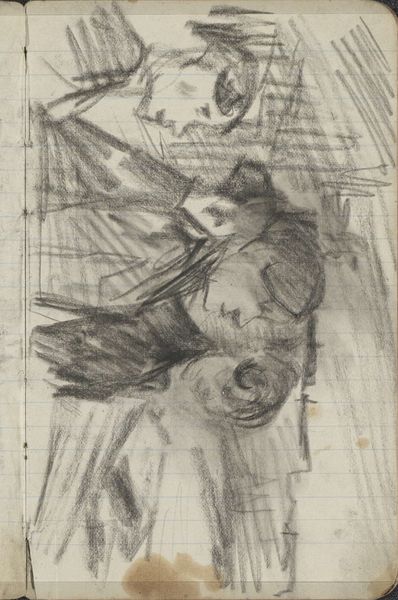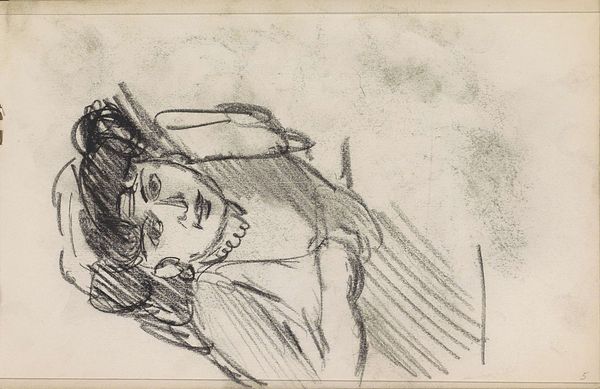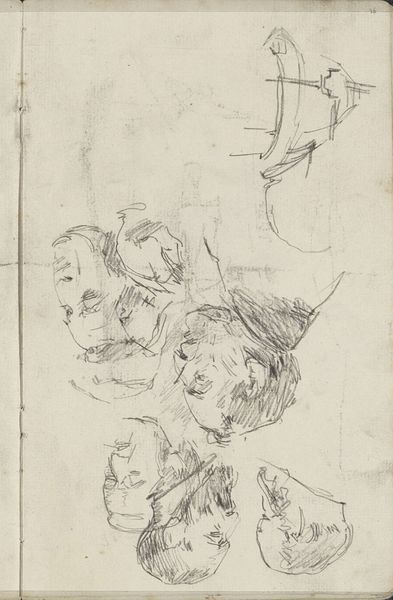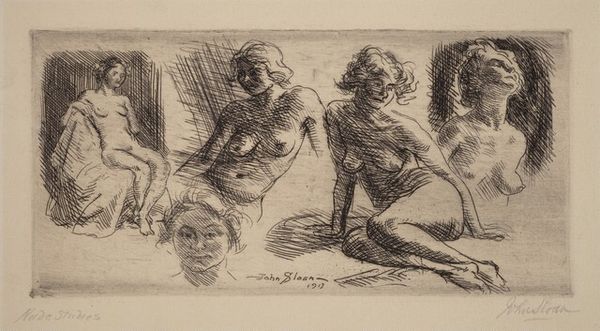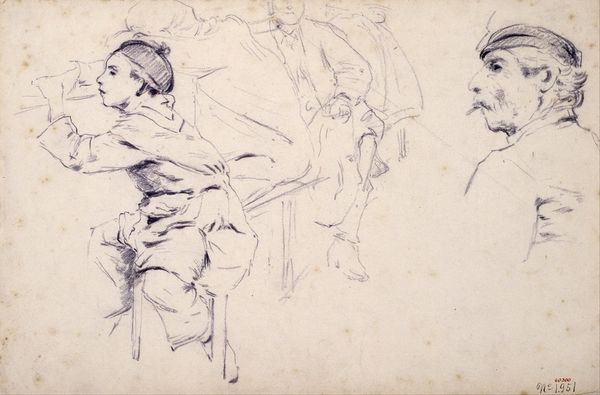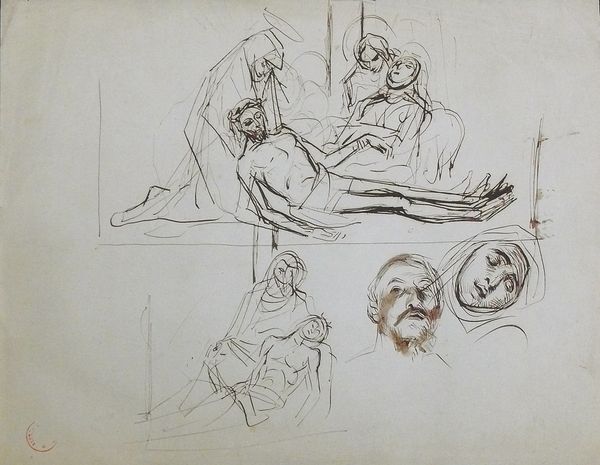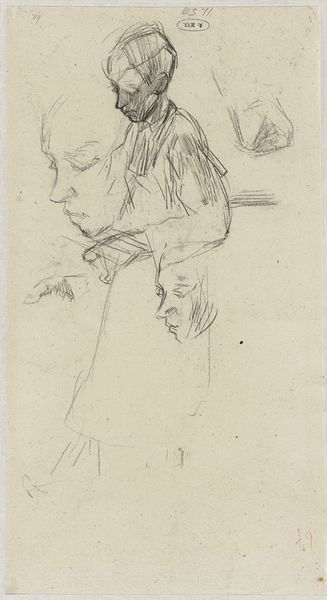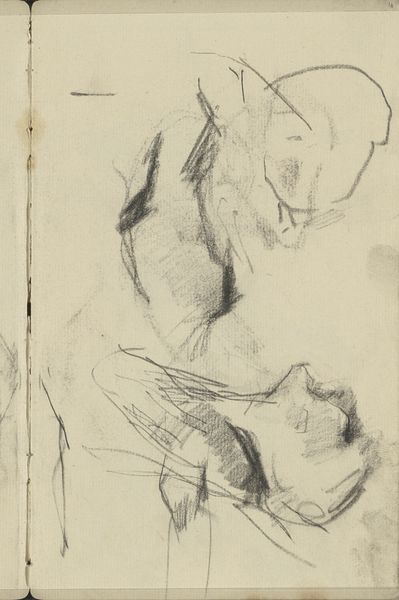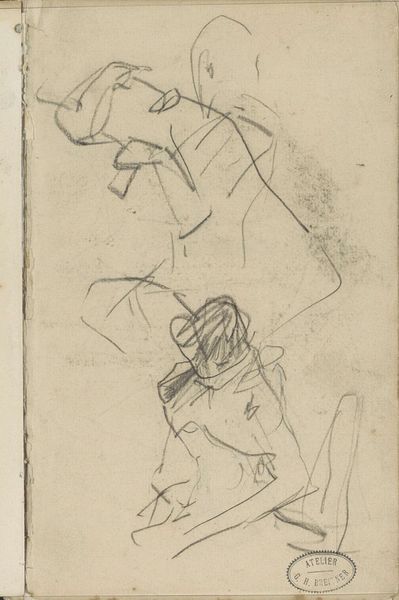
Dimensions: 14 3/4 × 19 3/4 in. (18.4 × 28.9 cm)
Copyright: Public Domain
Curator: What strikes me first about Umberto Boccioni's "Sheet of Studies with Five Portraits," made in 1909 and currently held at the Met, is the pervasive sense of melancholy. The etched lines seem to tremble with barely suppressed emotion. Editor: It looks more like preliminary explorations, almost throwaway experiments on paper using pencil, not the fully realized Futurism he became known for. A snapshot of Boccioni grappling with form and perspective. What can you tell me about how he used materials? Curator: Notice how each of the portraits offers a distinct archetype. We see the brooding intellectual, the studious woman, and the innocent child—all figures common in early 20th-century iconography as modernity took hold. Their faces become vessels of modern anxiety and introspection. Editor: Etchings like this often reveal the artist's process. The multiple poses on one sheet suggest the economic pressures of material constraints in the pre-war years, like an efficient use of paper—a practical need dictating the final layout. This wasn’t about refined presentation; it was more workaday. Curator: Yet consider the symbol of the eye; it holds particular potency here. Each gaze, averted or direct, speaks to the fractured self, questioning its reflection. Even the seemingly mundane act of drawing emphasizes a quest for the self, the modern identity in the face of an uncertain future. Editor: Still, the rough quality of the lines argues for prioritizing quantity and experimentation. He was part of a movement that challenged academic boundaries. It reflects this tension between fine art ambition and an accessible artistic experience, using readily available materials. Curator: I’d add that it's more than accessible. Boccioni understood how art could reveal the inner life of a changing society, making its invisible hopes and anxieties visible through symbol. Editor: Indeed, the art reveals constraints on available materials as he forged his revolutionary visual language in those nascent stages. An artist's everyday challenges! Curator: These portrait studies offer us an intimate glance at a pivotal point in art history, unveiling his complex mind. Editor: It gives us a window into how a revolutionary art practice took form in material reality.
Comments
No comments
Be the first to comment and join the conversation on the ultimate creative platform.
